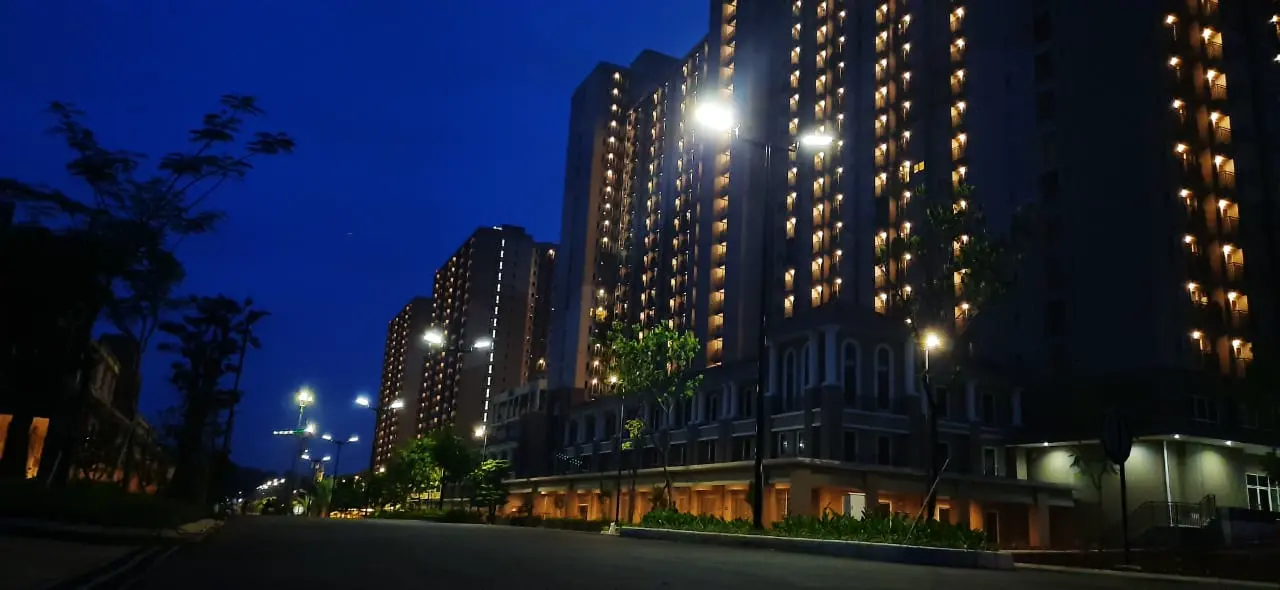Project Background and Needs Analysis
Indonesia’s urbanization is advancing rapidly. According to United Nations data, the country’s urban population now exceeds 55% and is projected to reach 70% by 2050. This growth has directly led to a surge in electricity demand, overwhelming the national grid—particularly in core economic zones like Java and Sumatra. Many emerging communities and remote urban fringe areas suffer from inadequate coverage of traditional lighting infrastructure, resulting in poorly lit streets at night and significant safety hazards for residents. Conventional streetlight systems rely on fossil fuel-generated electricity, which not only exacerbates greenhouse gas emissions but also undermines the Indonesian government’s commitments to the Paris Agreement.
Analyzing the Pain Points of Traditional Streetlights
The drawbacks of conventional urban lighting systems are clear:
-
High operational costs: Municipally powered streetlights often consume 10–15% of government budgets annually. Combined with frequent cable maintenance and bulb replacements, costs remain prohibitively high.
-
Energy and environmental impacts: As a coal-dependent nation, Indonesia’s reliance on fossil fuels for street lighting increases the carbon footprint while worsening air pollution and climate change.
-
Maintenance complexity: Aging underground cables and transformer failures require specialized teams for repair. These processes often disrupt traffic and inconvenience residents.
Before the project, the city’s streets were dimly lit, with many community roads relying on sparse, outdated fixtures. Pedestrians, cyclists, and drivers faced higher accident risks. Residents reported increased nighttime crime and reduced community vitality—shops closed early, and night markets struggled. Citizens urgently needed a safe, reliable lighting system to improve quality of life and attract investment.
The launch of the Sresky Atlas Series solar streetlight project addressed these pain points directly, providing a zero-electricity-cost, zero-emission solution to transform the city’s nighttime landscape.
Technical Solution Design: Core Advantages of the Sresky Atlas Series
The Sresky Atlas Series solar streetlights were chosen as the core solution. Offering brightness from 2000LM to 10000LM, the series is versatile enough to suit diverse street scenarios.
Core Technology Adapted for Tropical Climates
Indonesia’s tropical monsoon climate brings frequent overcast conditions and high temperatures—key challenges for solar lighting. The Atlas Series incorporates ALS (Adaptive Lighting System) 2.3 technology, which dynamically adjusts brightness and power output to maintain reliable illumination during over 10 consecutive rainy days. Unlike conventional solar lights, ALS 2.3 ensures 100% year-round lighting, avoiding the common issue of “bright on sunny days, dark on rainy days.”
The series also features TCS (Temperature Control System) technology. High heat and humidity accelerate battery degradation, but TCS regulates battery temperature to ensure stable charging and discharging within -20°C to +60°C. Compared to standard lithium iron phosphate batteries, the Atlas lithium-ion batteries achieve up to 1,500 cycles, maintaining high efficiency in Indonesia’s climate. High-efficiency monocrystalline silicon panels (>21% conversion) enable charging within 6.7–10 hours, even under limited sunlight.
User-Friendly and Intelligent Features
The Atlas Series integrates a high-sensitivity PIR (Passive Infrared) sensor with an 8m detection range and 120° field of view. It activates 100% brightness when motion is detected, then reverts to energy-saving mode (e.g., 30%) afterward—enhancing security while conserving energy.
Three preset lighting modes provide flexible operation:
-
M1 Mode: 30% base brightness + PIR until dawn (ideal for low-traffic community roads).
-
M2 Mode: 100% brightness for 5 hours + 25% for next 5 hours + PIR + 70% until dawn (suited for mixed-traffic streets).
-
M3 Mode: 70% constant brightness until dawn (for high-density main roads).
The luminaire is built with aluminum alloy + PC materials, rated IP65/IK08, and equipped with dual anti-corrosion protection—capable of withstanding tropical storms and salt spray. A modular structure allows direct component replacement on the pole, minimizing maintenance costs.
Project Implementation and Deployment
During planning, fixtures were deployed based on street width and traffic volume:
-
SSL-34A for narrow roads (4m pole height / 15m spacing).
-
SSL-310A for main roads (10m pole height / 32m spacing).
Professional simulation software was used to model lighting effects, ensuring 100% coverage.
Project Outcomes and Impact
Social Impact
Once-dim streets became brightly illuminated, reducing nighttime crime by over 20% and improving residents’ sense of security. Nighttime economic activity grew: businesses extended hours, night markets thrived, and community spaces regained vitality.
Economic Benefits
Zero electricity costs saved government budgets, while the low-maintenance modular design further reduced expenses.
Environmental Contributions
Powered entirely by clean energy, the system achieved CO₂ reductions equivalent to planting thousands of trees annually, aligning with Indonesia’s carbon neutrality goals. The project stands as a replicable benchmark for green lighting across Southeast Asia.
Risks and Mitigation Strategies
Despite robust design, certain risks require management:
-
Extreme weather: Prolonged downpours may impact charging. ALS 2.3 and IP65 protection minimize these risks, supported by regular inspection protocols.
-
Theft risks: Mitigated through integrated component design and community oversight.
-
Performance degradation: Covered by a 3-year warranty and supported by a 1,500-cycle battery lifespan. The modular design also allows future upgrades.
Conclusion
The Indonesian Urban Street Solar Lighting Project demonstrates the Sresky Atlas Series‘ exceptional real-world performance. It resolves energy challenges, enhances public safety, improves quality of life, and drives sustainable transformation. For global city administrators, it provides a replicable model of clean, reliable, and future-ready urban lighting.
Table of Contents
